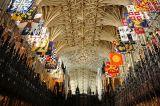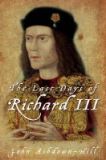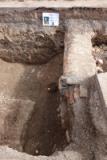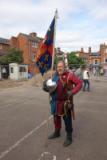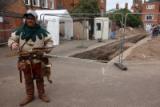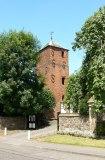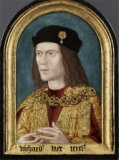 This is what Prof Lynn Foxhall of the University of Leicester said about the ongoing tests which are carried out on the male skeleton found in the former Greyfriars church in Leicester.
This is what Prof Lynn Foxhall of the University of Leicester said about the ongoing tests which are carried out on the male skeleton found in the former Greyfriars church in Leicester.
However encouraging the statement may look, it would be too early to jump to conclusions. The various tests are still ongoing and results are only expected in January.
So far we heard most about the DNA testing trying to match the mtDNA of the remains to that of a descendant of Richard’s eldest sister Anne, but this is only one of the aspects investigated. This descendant’s connection is also being verified and researchers are hoping to establish a second line of descent.
Other tests include the analysis of soil samples from the grave surrounding the skeleton, from which we may not only find out more about the burial practice, but also about the health and diet of the person who was buried there. This would be in conjunction with evidence gathered from samples of mineralised dental plaque, providing information on the person’s diet, health and living conditions.
Scientists are examining the skeleton in detail trying to get some idea about the person’s age and figure and the scoliosis. Experts are also trying to establish how exactly the individual died and what kind of weapon would have caused the horrific injuries to the skull.
The remains are also radiocarbon dated in two separate examinations, which will give us an idea of when the person died, to within 80 years.
However, if these remains are indeed those of Richard, the most interesting process would be the CT scan from which a 3-D image of the person can be built. This would also be the basis for facial reconstruction so that one day we may be able to see what Richard really looked like – remember, none of the existent portrays is contemporary.
All these tests together will provide a detailed image of the person’s lifestyle, his health and even where he grew up, and will thus provide “more assurance about the identity of the individual”.
The process reminds me of the wide variety of information which has been established about Ötzi, the “iceman” found by hikers in the Ötztaler Alps in September 1991. I have been fascinated by him since he was first discovered and the story of the find was one of the last I wrote about as assistant for a scientific research organization. Compared to Ötzi’s age of 5300 years, this man’s 500 years seems to be a very short time frame indeed.
More information:
‘‘It’s not like CSI’: the Science of the Search for Richard III’, University of Leicester (15 Nov 2012).
‘Richard III dig: Results expected in January’, BBC News Leicester (19 Nov 2012).
Tags: Archaeology, Leicester, Leicester Greyfriars Dig, Richard III
